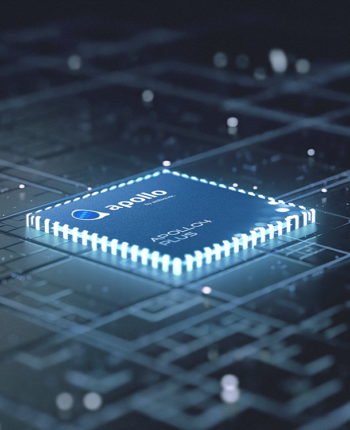Ambiq apollo sdk - An Overview
Ambiq apollo sdk - An Overview
Blog Article

“We proceed to discover hyperscaling of AI models leading to greater overall performance, with seemingly no conclude in sight,” a set of Microsoft scientists wrote in October within a blog site publish saying the company’s significant Megatron-Turing NLG model, built in collaboration with Nvidia.
Ambiq®, a number one developer of ultra-low-power semiconductor methods that supply a multifold rise in Power performance, is happy to announce it has been named a receiver with the Singapore SME five hundred Award 2023.
Take note This is useful throughout characteristic development and optimization, but most AI features are supposed to be built-in into a bigger software which commonly dictates power configuration.
Most generative models have this basic set up, but vary in the main points. Listed here are three popular examples of generative model strategies to provide you with a way on the variation:
Genuine applications hardly ever really need to printf, but this is the popular operation while a model is getting development and debugged.
Nevertheless despite the impressive success, scientists still usually do not comprehend accurately why raising the amount of parameters prospects to raised effectiveness. Nor do they have a repair with the poisonous language and misinformation that these models discover and repeat. As the first GPT-3 workforce acknowledged in the paper describing the engineering: “Internet-experienced models have internet-scale biases.
Staying Forward of the Curve: Remaining in advance is additionally important in the fashionable working day company ecosystem. Organizations use AI models to respond to altering marketplaces, anticipate new industry requires, and consider preventive actions. Navigating today’s consistently changing organization landscape just bought less difficult, it can be like having GPS.
The creature stops to interact playfully with a group of tiny, fairy-like beings dancing around a mushroom ring. The creature appears up in awe at a sizable, glowing tree that seems to be the heart from the forest.
extra Prompt: Photorealistic closeup video of two pirate ships battling one another because they sail inside of a cup of espresso.
Open up AI's language AI wowed the public with its obvious mastery of English – but is all of it an illusion?
Basic_TF_Stub can be a deployable key word recognizing (KWS) AI model based upon the MLPerf KWS benchmark - it grafts neuralSPOT's integration code into the prevailing model so that you can enable it to be a performing search phrase spotter. The code uses the Apollo4's low audio interface to collect audio.
Moreover, designers can securely develop and deploy products confidently with our secureSPOT® technologies and PSA-L1 certification.
We’ve also produced sturdy impression classifiers that happen to be utilized to evaluate the frames of each video generated to assist make sure that it adheres to our usage guidelines, just before it’s proven for the consumer.
Namely, a small recurrent neural network is utilized to know a denoising mask that's multiplied with the original noisy input to create denoised output.
Accelerating the Development of Optimized AI Features with Ambiq’s neuralSPOT
Ambiq’s neuralSPOT® is an open-source AI developer-focused SDK designed for our latest Apollo4 Plus system-on-chip (SoC) family. neuralSPOT provides an on-ramp to the rapid development of AI features for our customers’ AI applications and products. Included with neuralSPOT are Ambiq-optimized libraries, tools, and examples to help jumpstart AI-focused applications.
UNDERSTANDING NEURALSPOT VIA THE BASIC TENSORFLOW EXAMPLE
Often, the best way to ramp up on a new software library is through a comprehensive example – this is why neuralSPOt includes basic_tf_stub, an illustrative example that leverages many of neuralSPOT’s features.
In this article, we walk through the example block-by-block, using it as a guide to building AI features using neuralSPOT.
Ambiq's Vice President of Artificial Intelligence, Carlos Morales, went on CNBC Street Signs Asia to discuss the power consumption of AI and trends in endpoint devices.
Since 2010, Ambiq has been a leader in ultra-low power semiconductors that enable endpoint devices with more data-driven and AI-capable features while dropping the energy requirements up to 10X lower. They do this with the patented Subthreshold Power Optimized Technology (SPOT ®) platform.
Computer inferencing is complex, and for endpoint AI to become practical, these devices have to drop from megawatts of power to microwatts. This is where Ambiq has the power to change industries such as healthcare, agriculture, and Industrial IoT.
Ambiq Designs Low-Power for Next Gen Endpoint Devices
Ambiq’s VP of Architecture and Product Planning, Dan Cermak, joins the ipXchange team at CES to discuss how manufacturers can improve their products with ultra-low power. As technology becomes more sophisticated, energy consumption continues to grow. Here Dan outlines how Ambiq stays ahead of the curve by planning for energy requirements 5 years in advance.
Ambiq’s VP of Architecture and Product Planning at Embedded World 2024
Ambiq specializes in ultra-low-power SoC's designed to make intelligent battery-powered endpoint solutions a reality. These days, just about every endpoint device incorporates AI features, including anomaly detection, speech-driven user interfaces, audio event detection and classification, and health monitoring.
Ambiq's ultra low power, Artificial intelligence developer high-performance platforms are ideal for implementing this class of AI features, and we at Ambiq are dedicated to making implementation as easy as possible by offering open-source developer-centric toolkits, software libraries, and reference models to accelerate AI feature development.
NEURALSPOT - BECAUSE AI IS HARD ENOUGH
neuralSPOT is an AI developer-focused SDK in the true sense of the word: it includes everything you need to get your AI model onto Ambiq’s platform. You’ll find libraries for talking to sensors, managing SoC peripherals, and controlling power and memory configurations, along with tools for easily debugging your model from your laptop or PC, and examples that tie it all together.
Facebook | Linkedin | Twitter | YouTube